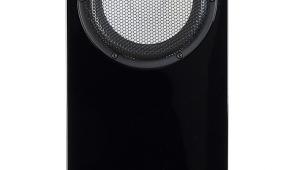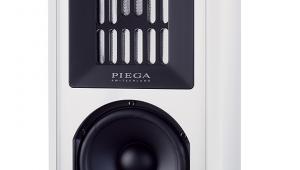Cabasse Iroise 3 (£3400)
Let’s play a game of audio word association. If I say ‘Cabasse’, what’s your response? If it’s ‘What?’ because you’ve never heard of the French speaker manufacturer then shame on you. Its name may not be on everyone’s lips but Cabasse has been around a long time and even in not-always-Francophile UK the marque has staunch admirers.
If you replied ‘Bizarre’ instead then that is both linguistically and technically nearer the mark. The French have a history of producing strange-looking loudspeakers – remember the Epsilon eggs? – and some of the Cabasse product portfolio is certainly left-field if not rive gauche. Its top-of-the-range La Sphère, as its name suggests, is spherical. That’s unusual enough but this sphere contains a four-way coaxial drive unit array, which is utterly unique. Even at £90,000.
Lower down the range Cabasse speakers eventually become more ordinary looking boxes, like the Iroise 3, but that’s not to say there aren’t still some surprises in store. First of which is sensitivity. Cabasse claims that the Iroise 3 generates 92dB SPL at 1m for just 2.83 volts input, which was confirmed by my measurements and is around 4dB higher than average. Put more practically, a 4dB hike in sensitivity is like having an amplifier 2.5 times more powerful, and there may be other spin-off benefits in the way of reduced power compression because the drive unit voice coils are heated less.
DOING IT THEIR OWN WAY
A further surprise is the Iroise 3’s unusual coaxial mid/treble driver. Cabasse likes coaxial drive units, as you’ll have gathered, but certainly doesn’t take a me-too approach to their design. Whereas most coaxial drivers comprise a cone unit with a tweeter at its apex, this BC13 unit has a central soft-dome tweeter surrounded by an annular midrange diaphragm that is domed to look like the top half of a doughnut. Or the top half of a torus, if you want to be geometrically precise.
This arrangement has an advantage over the conventional alternative that the tweeter is no longer loaded by a long acoustic horn (just a very short one in the BC13). If you ever have the opportunity to feed white or pink noise through just the tweeter section of a conventional coaxial driver, try it – you may be surprised at how obvious the coloration is. The Cabasse approach avoids that – not that you can verify this with the Iroise 3 since it doesn’t have a split crossover – but may not give such close control of directivity through the crossover region. Beneath the coaxial unit are two bass drivers of 170mm effective diameter which operate in parallel to the first crossover at 800Hz. The mid section of the coaxial unit then carries the baton to 3.6kHz where it hands over to the tweeter. Reflex loading of the two bass units is achieved via a downwards-firing flared port which exhausts into the gap between the bottom of the cabinet proper and its integral high-gloss plinth.
COVERING THE TRACKS
Physically large at 1160×320×420mm, the Iroise 3 delivers a sound of concomitant scale that’s big dynamically as well as spatially. But to enjoy the speakers’ qualities at their fullest you have first to take care over positioning, particularly listening height. If your ear level is much below that of the tweeter axis the sound loses upper midrange/lower treble definition – which, as the tweeter is about 1080mm above floor level, may present practical difficulties. I found that I had to make myself a booster seat out of sofa cushions; tilting the speaker forward a little would certainly achieve a more dignified solution.
Get this right and the Iroise 3 delivers consistently engaging and generous music-making. It is just plain good fun to listen to – across a wide variety of genres. High sensitivity speakers are often notably colored but the big Cabasse keeps its tonal inaccuracies sufficiently in check that you can adapt to and disregard them. The treble isn’t as pristine as delivered by the best metal dome tweeter installations and there is some upper-bass/lower-midrange thickening – but mostly these shortcomings don’t intrude. As we used to say, the Iroise 3 is good at covering its tracks.
I listened to it with everything from Eric Clapton’s Double Trouble – a gratifyingly honest live rock recording – to the Hilliard Ensemble’s Early Music from the Time of Henry VIII, a recording I treasure as the one that opened my eyes to early music when I first bought it as a rough Saga Classics pressing post-concert in 1978. The Iroise 3 relished both and everything inbetween, with wide, deep imaging – particularly welcome on John Shuttleworth’s fine Hilliard Ensemble recording – and an easy, unfettered way with dynamics which imbued the Clapton album with just the right balance of weightiness and rough edges.
EASY DOES IT
The downside to its easygoing nature is that the Iroise 3 is never likely to be chosen as a monitoring speaker: it is more concerned with making enjoyable music than it is with exposing every nuance of a performance and recording. As a result, when you listen to a compilation album like ALR Jordan’s Voices, which encompasses a wide range of recording philosophies from purist to manipulative, the contrasts aren’t quite so starkly drawn as they ought to be. And the imaging, while generous in scale, is not an exemplar of meticulous precision. Ultimately, for me, this is an issue; for you it may be a welcome softening of focus at the end of a fraught day.
Of course, there are limits to the Iroise 3’s ability to apply band aids and soothing balm. The Robert Plant and Alison Krauss collaboration Raising Sand may have been hailed ‘one of the best albums of the year’ by Mojo in 2007, and some Grammy judges apparently agreed. But the appeal of this over-EQ’d, over-compressed mediocrity was as lost on the diplomatic Iroise as it was on me. Even Cabasse can’t perform miracles.
VERDICT
Of unusually high sensitivity but without high coloration, the Iroise 3 delivers the traditional benefits of efficient speakers without the common problems. It doesn’t offer the ultimate in hear-through transparency but that won’t matter to those who treasure its outgoing, inherently musical nature which tends to turn short listening sessions into long ones.
Originally published in the July 2009 issue
























































